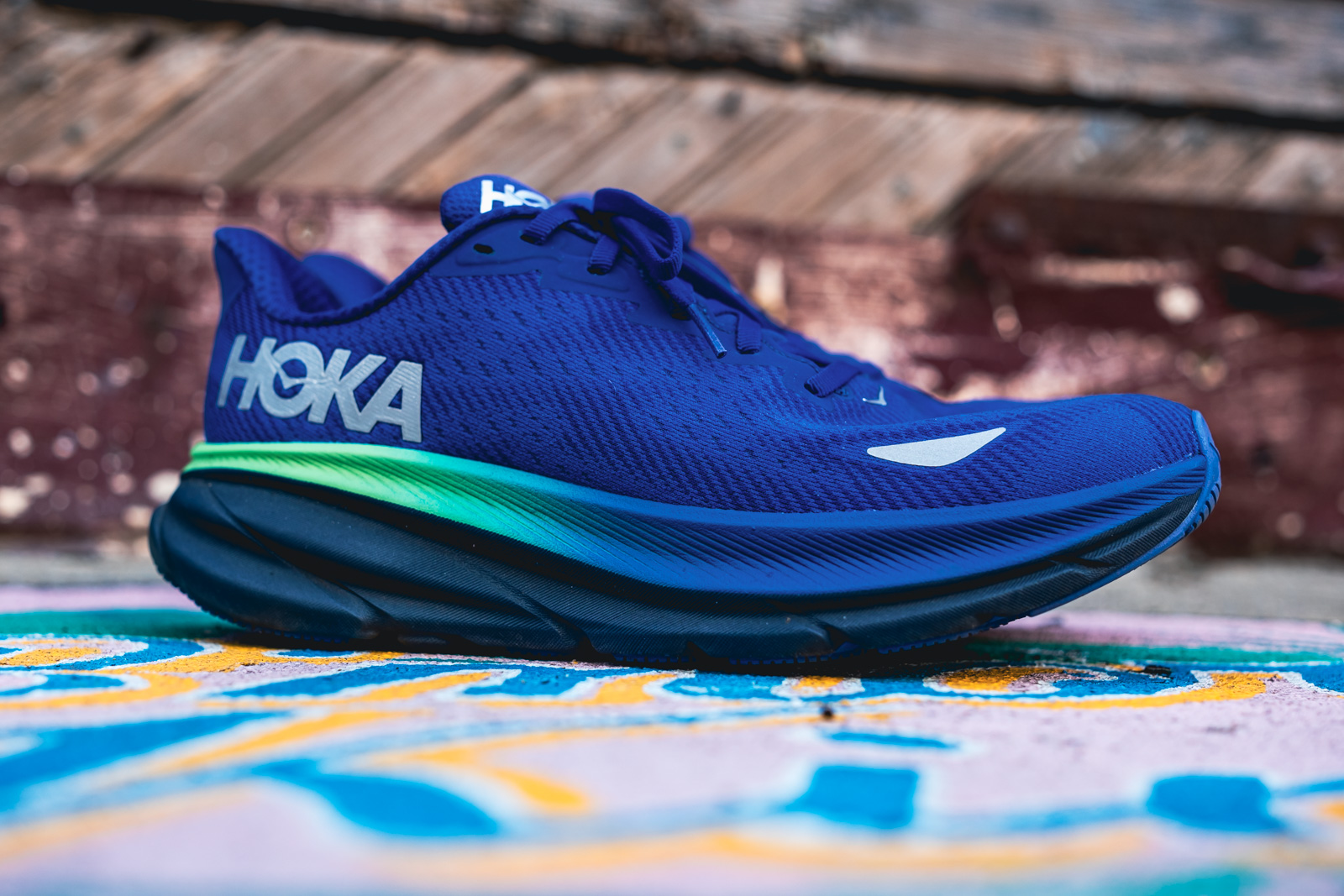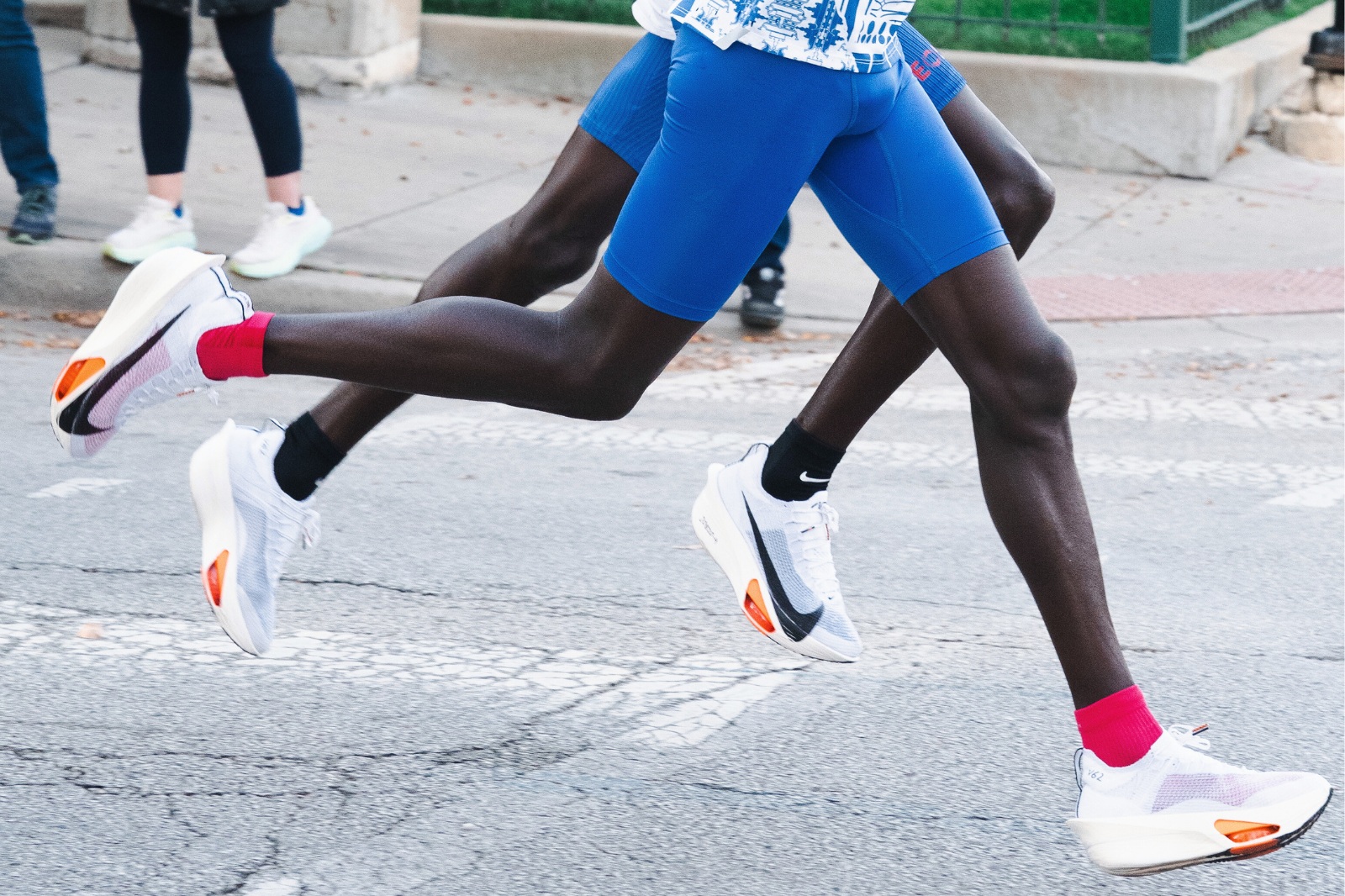
We independently review everything we recommend. When you buy through our links, we may earn a commission.
N/A
N/A
Race day
Reinforced rubber beneath Zoom Air units, full-length ZoomX, redesigned lace system and tongue area
N/A (probably $275-$300), January 2024
Just two weeks ago, Tigist Assefa smashed the women’s marathon world record at the Berlin Marathon, an impressive takedown of an already high standard. It was the crown jewel of a golden Adidas marketing campaign built around the $500 Adizero Adios Pro Evo 1, the most exciting thing in running footwear since Eliud Kipchoge ran an unofficial sub-2 hour marathon in the Nike Alphafly Next%.
Suddenly, Adidas had flipped the script on the race day storyline, loosening the vice-like grip that Nike has held over the last five years.
Lost in the cacophony of the Evo 1 hype was the fact that Kipchoge still won the Berlin Marathon and did so handily. Sure, it wasn’t his fastest marathon ever. No, it wasn’t a marathon world record. But it was his record-breaking fifth Berlin Marathon win, and he did it in a prototype of the Nike Alphafly 3, the next evolution of the only shoe to ever break the two-hour mark in the marathon (even if it didn’t count).
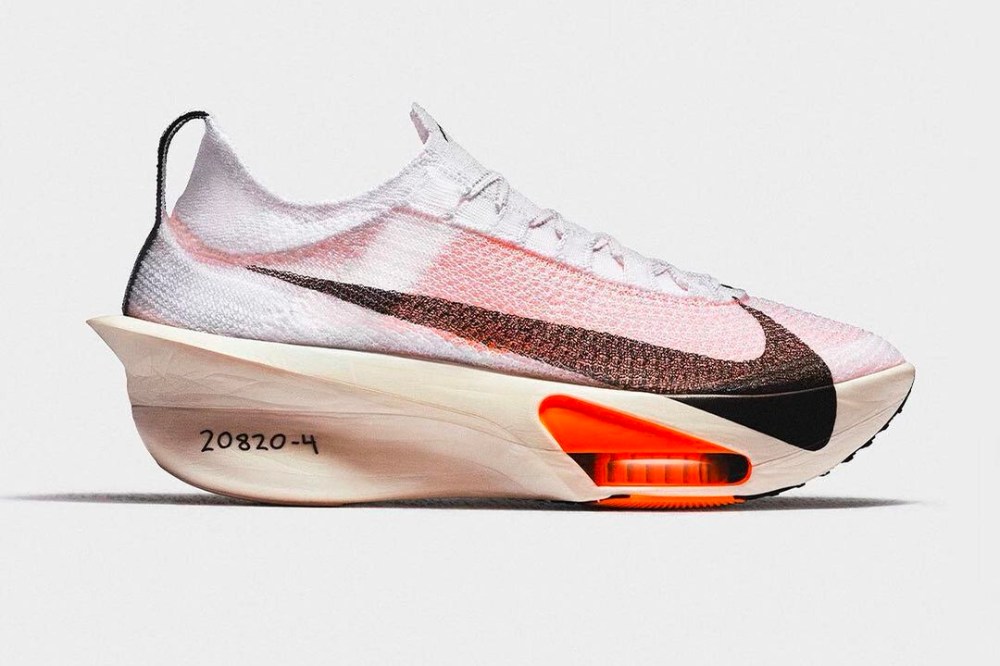
Nike Alphafly 3 (photo courtesy of Nike Running via Instagram)
Nevertheless, the footwear focus seemed to be on the Evo 1, on account of its exclusivity, price tag, and proven performance. The hype train was full steam ahead. That is, until 23-year-old Kelvin Kiptum lined up at the Chicago Marathon for only the third marathon of his young career.
At the end of Kiptum’s 26.2 mile journey, it was clear a torch had been passed from one Kenyan to another as Kiptum shattered Kipchoge’s former world record by over a half minute, finishing in a time of 2:00:35. The finish line was a demarcation between two sides of reality– the previous one in which we thought a sub-2 hour marathon on an official course would be possible, and the new one, in which we know it will happen, and sooner than any of us could have imagined.
The shoe he ran in? The Nike Alphafly 3, of course.
It goes without saying, but it’s poetically appropriate that a jaw-dropping performance in Chicago put the basketball back on Nike’s court.
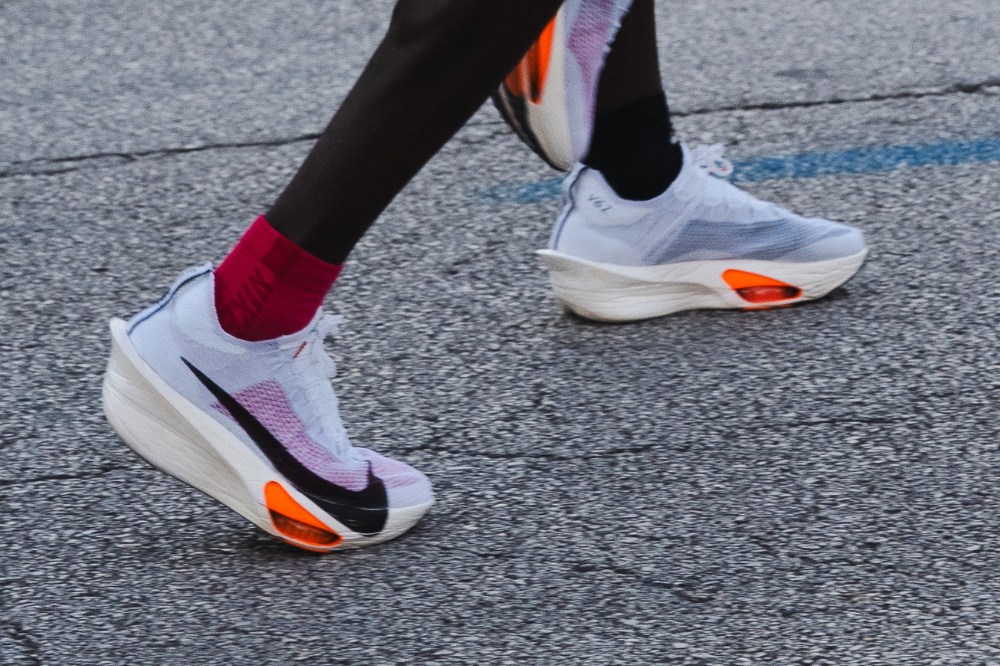
Kiptum’s shoes on course at Chicago
Full disclaimer, we only had a pair in our hands for a short time, and cannot confirm weights, technology, materials, etc. Everything in this section is based on our experiences with past versions of the Alphafly and Nike racing shoes, our in-hand observations of the shoe, and publicly published patent designs. Any references to materials or designs or internal technology is purely speculative. The version in the photos below was taken after the Chicago Marathon and already had training miles on it.
If you’re at all interested in running shoes, the Alphafly 3 hasn’t exactly been a secret, with enough leaks on Reddit and Instagram over the last six months to constitute a class-5 river rapid. And in the 12 hours since I first drafted this, Nike officially announced the shoe and its release date, while reminding everyone that it’s been tested and proven by the fastest runners in the world. It was a clear shot across the bow at Adidas. I respect the shade.
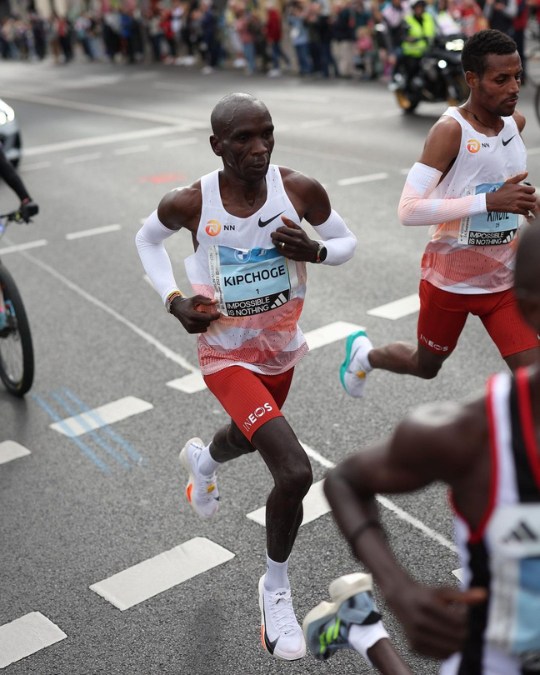
Eliud Kipchoge at the 2023 Berlin Marathon (photo courtesy of NN Running)

Siffan Hissan breaks the course record at the 2023 Chicago Marathon (photo courtesy of Nike via Instagram)
But let’s get into the shoe.
What we’ve known for a while is that the design is a clear deviation from the first two versions of the shoe, specifically in the midsole and outsole design. The previous version of the Alphafly midsole followed the original formulation fairly closely, with a partially separated forefoot and heel section. In the new version, we see that the Zoom Air units are now more or less encased within ZoomX, which now extends throughout the midfoot area, connecting both the heel and forefoot for a more cohesive look.
What’s interesting about the new version is that the design of the midsole makes it appear as if the heel section thinned out a bit. However, looking underneath the carriage, it seems relatively similar overall, and in fact, maybe even wider, especially towards the rear of the shoe.
What’s clear is that they did fill in the gaps separating the heel from the forefoot, making the midsole a more cohesive unit. Perhaps they found this helps with stability (a stated goal of version two), while giving back some of the magic we missed in v1. Either way, the Alphafly 3 offsets some of those foam additions in the midfoot area by carving out a longer cavity through the middle of the shoe, extending through the midfoot into the middle heel area.
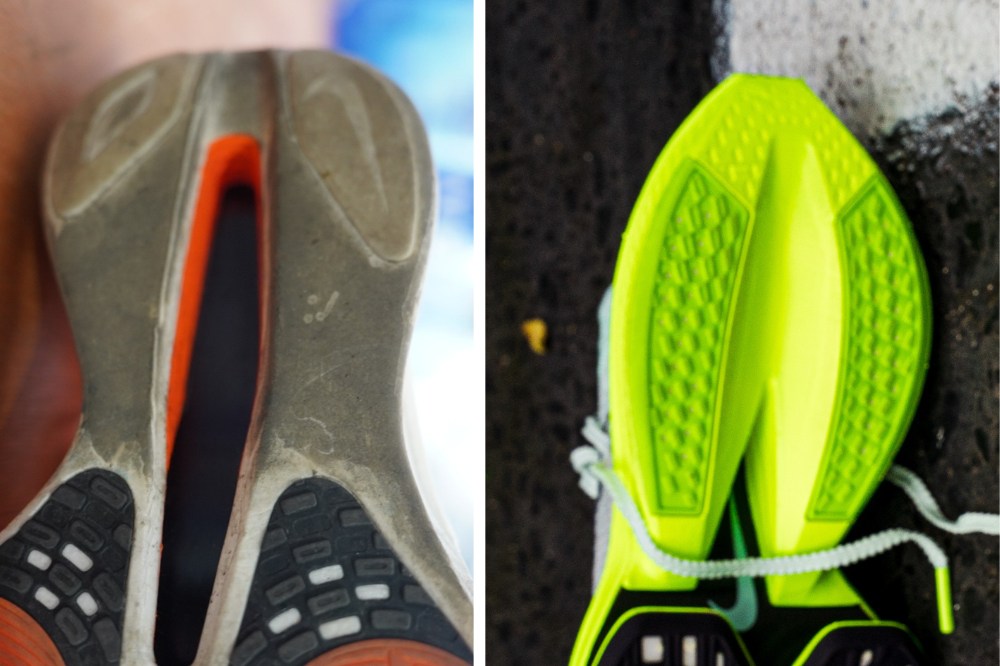
Tongue and laces
From our observations, it appears the full-length Flyplate is pretty much the same, extending from the heel area to just beyond the Zoom Air units. You can see the line of the plate (i.e. the meat in between the two pieces of ZoomX bread) above the Zoom Air pod in the photo below.
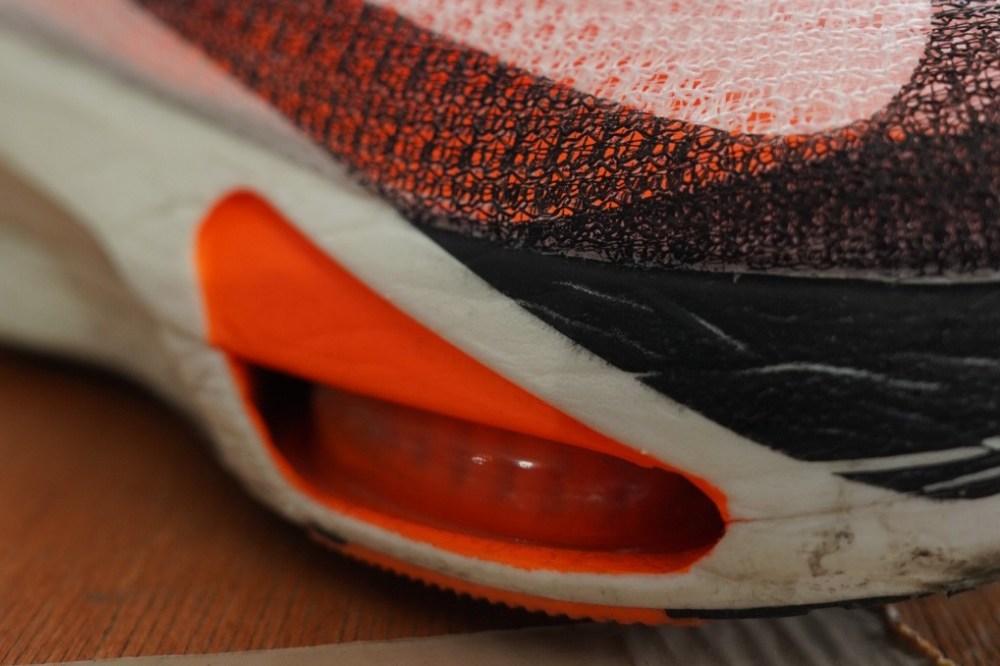
Zoom Air units are attached to the plate above, as with previous versions of the shoe
We don’t think there’s any new revolutionary technology in this shoe, mainly because there are no new patents related to it, other than material designs. It seems that the extremely extensive patent from the original Alphafly covers everything from here to infinity and beyond.
We also see a new outsole setup in this version. In the forefoot area, it’s clear that Nike and/or its return department heard loud and clear that people weren’t too happy with the Zoom Air units popping like kernels of Orville Redenbacher over a piping hot campfire. We’ve seen a ton of instances where nails, rocks, or other sharp debris went full Hindenburg on the units. It looks like they set out to remedy this problem by reinforcing the area beneath the units with more durable rubber segments.
Now, there’s one more interesting theory regarding the rubber beneath the pods that Thomas (founder of Believe in the Run) postulated, which is this: In accordance with the World Athletics regulations, shoes cannot have two plates in them. But what if– in lieu of a plate- you just put a hardened rubber beneath the Zoom Air units to simulate a second plate? After all, the original Alphafly patents had designs with plates both above and below the Zoom Air units. The extra rigidity would give a harder surface and more compression/energy return for the tensile fibers within the Zoom Air unit. Not sure if that’s the case, but it’s interesting to think about.
The rest of the forefoot outsole looks relatively similar as the last version, with minor differences.
In the heel area of the outsole, the rubber segments are more reminiscent of the Vaporfly 3 than the Alphafly 2. A full rubber pad on the lateral side extends a bit further than the diamond-shaped segment on the medial side, which also has the middle cut out, presumably to save a bit of weight.
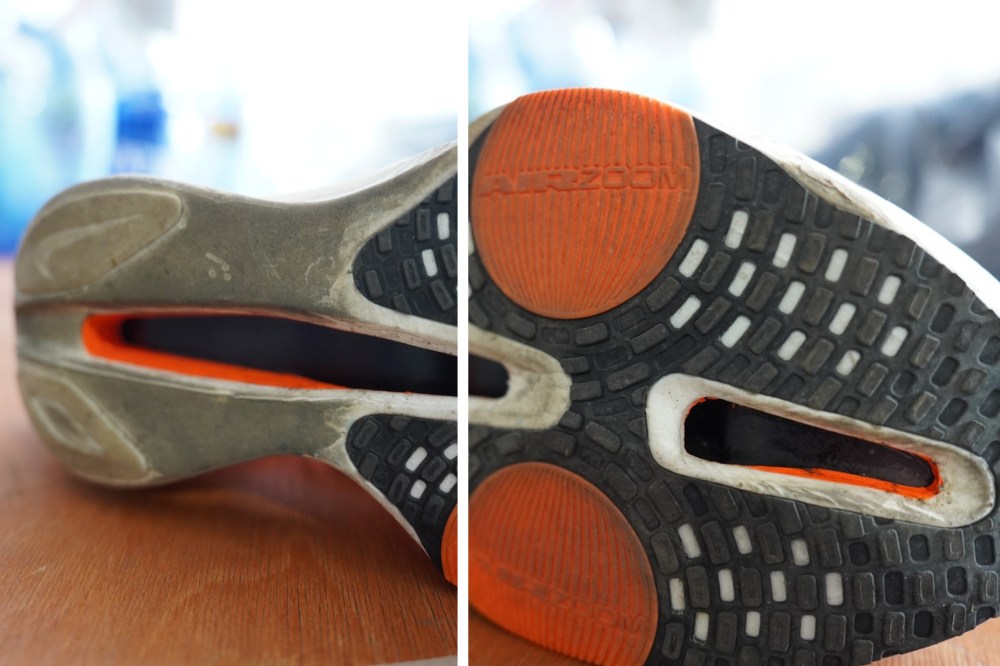
Reinforced rubber beneath the Zoom Air units
So let’s talk about the weight. Honestly, we have no idea if it’s heavier or lighter than the Alphafly 2), because a difference of a quarter or half ounce either way is pretty hard to gauge without a scale. However, we have heard that it’s lighter, but not as light as v1. Originally we thought it’d be heavier on account of the extra foam in the midfoot and more durable rubber under the Zoom Air units; however, that longer cutout in the heel seems to have evened things out.
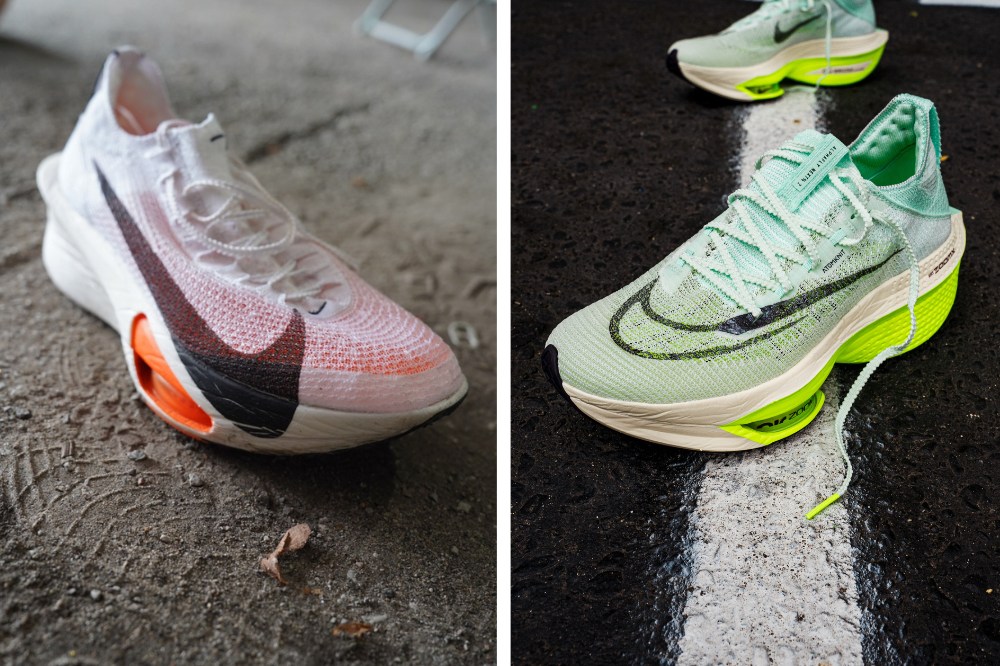
Alphafly 3 (left) vs Alphafly 2 (right)
The upper material appears to be the same Atomknit 2.0 used in the Alphafly 2, and looks relatively similar overall in terms of materials, though the design does have a few new features. Notably, the tongue area has more stretch knit coverage, with a new lacing configuration reminiscent of other Nike shoes we’ve seen in the past, like the Vaporfly Elite and its trail racing counterpart in the Nike Ultrafly. The pull tab on the tongue has also been eliminated (weight savings!).
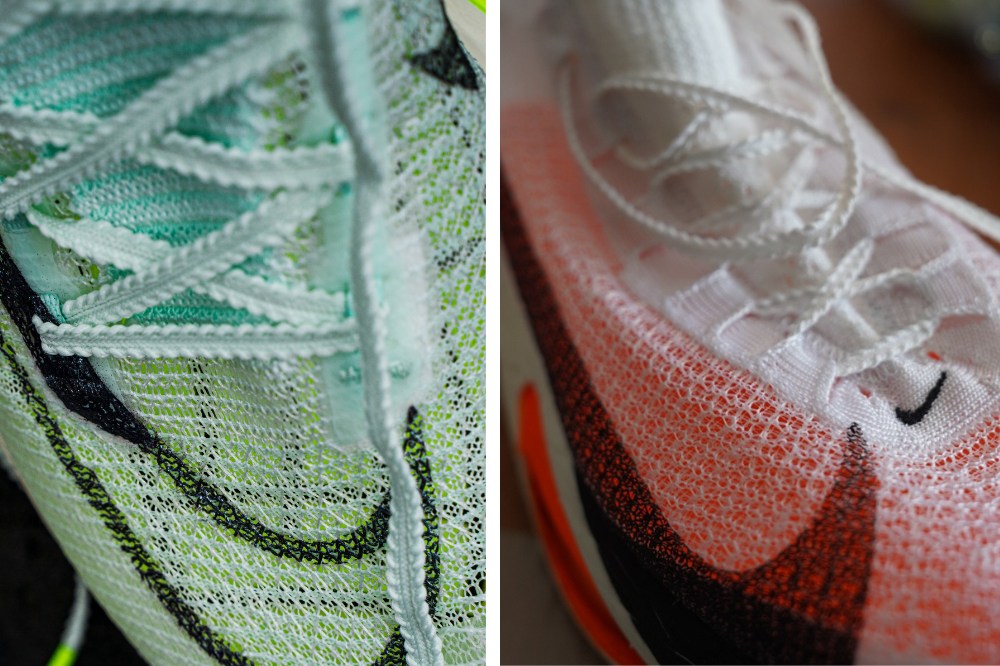
Upper details (Alphafly 2 on left vs Alphafly 3 on right)
In the heel counter, a new patent design was submitted which appears to give it a little more structure. In hand it seems relatively similar and does feature the internal pillows to give a more secure fit in order to eliminate any heel lift that may come from the rigid carbon fiber plate.
We don’t have an official release date, but Nike just announced the shoe is coming in January 2024, which is what we expected. That timing will align the release with the Olympic Marathon Trials, just like Nike did with the original Alphafly. Not sure if they’re gonna give free pairs to every Trials participant again, but that would be pretty rad if they give the green light to that sequel. We also don’t have a price point, but expect it to be in the $275-$300 range.
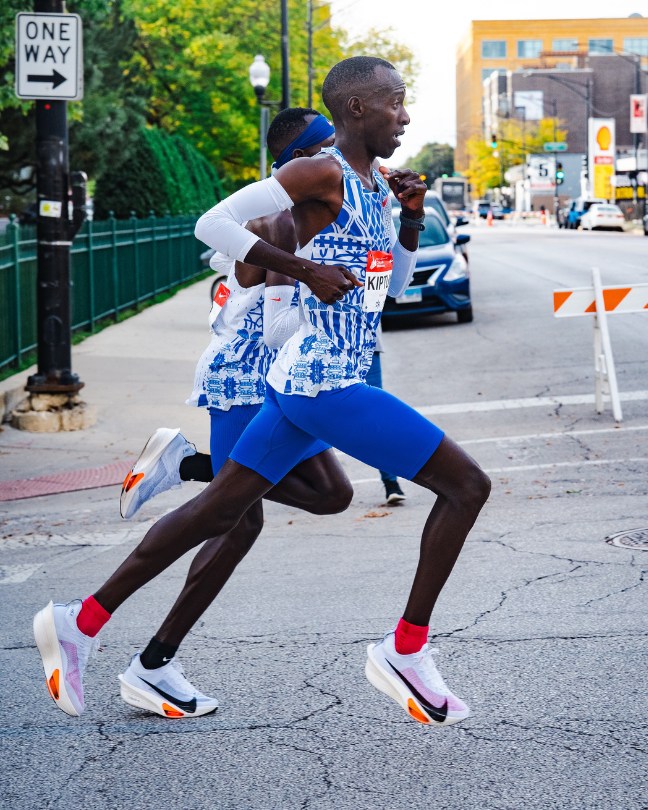
Kelvin Kiptum racing through the Chicago Streets
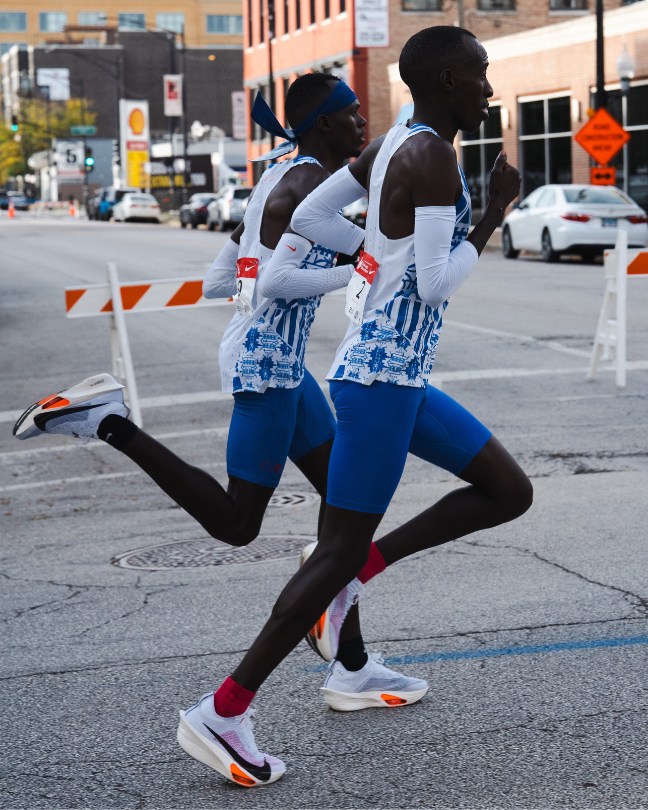
He’s fast
One final note: There’s a popular misconception that a shoe has to be available to the public to be used by an elite as a race day shoe in a marathon. While this was originally the rule, there’s actually a loophole in the current World Athletics shoe regulations that pretty much makes any shoe legal.
It’s what we’ll call the Development Shoe loophole, in that– in accordance with the World Athletics regulations– any shoe that’s considered to be “in development” doesn’t have to be available to the public, it just needs to be submitted and approved by World Athletics. We’ll probably do a more in-depth article about this at some point, but just know that as long as it’s pre-approved, it can be legally raced in without being available to the public. This is why we saw a miniature army of Alphafly 3s at Chicago, but can’t get our own hands on them.
So just know that the limited release of the Adidas Evo 1 didn’t happen because they needed to meet any rules prior to Berlin (it was already pre-approved by World Athletics)– it was just good marketing.
Which brings us back to the beginning. Did Nike take its own thunder back from Adidas? Kiptum certainly seemed to do his part for the mission, running a sub-hour negative split and calmly throwing down a 4:18 for the fastest mile ever in a marathon at… mile 22. So yeah, the shoe works for Kelvin Kiptum and it’s already turning world records and marathon wins into a game of Pokemon Go for its athletes.
Will that translate to the general runner on race day, the same way the Vaporfly and Alphafly did? We’ll find out soon enough.
Want to learn more about how our review process works? Check out this guide.
Have something to say? Leave a Comment

Robbe is the senior editor of Believe in the Run. He loves going on weird routes through Baltimore, finding trash on the ground, and running with the Faster Bastards. At home in the city, but country at heart. Loves his two boys more than anything. Has the weakest ankles in the game.
More from Robbe
